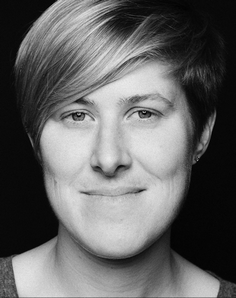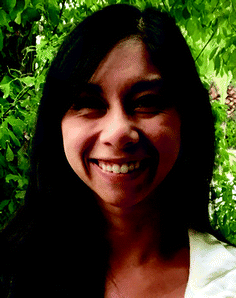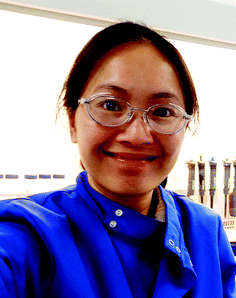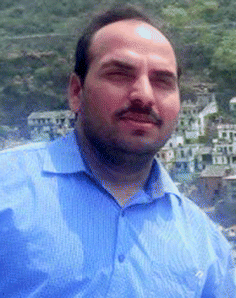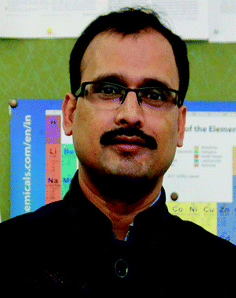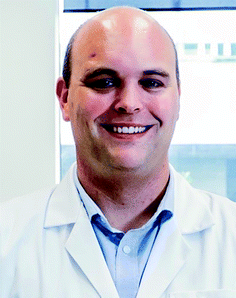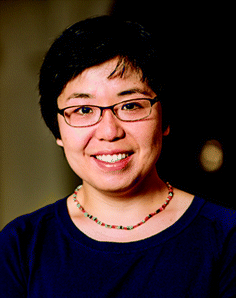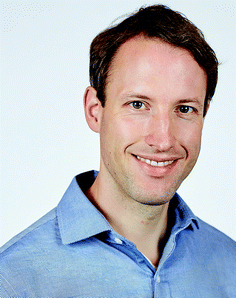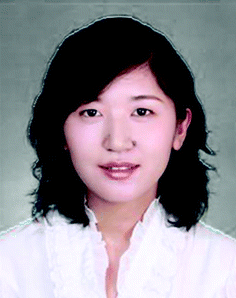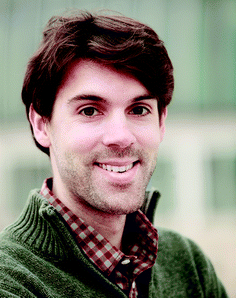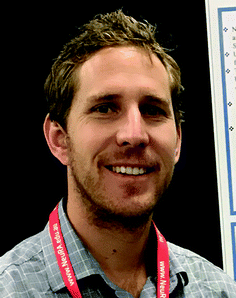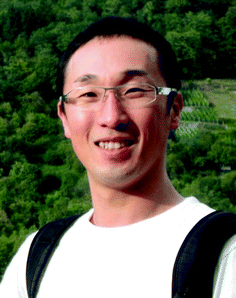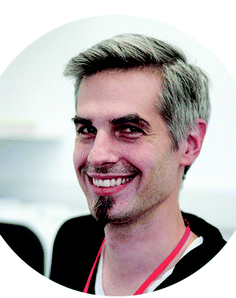Metallomics: Emerging Investigators 2019
Katherine J.
Franz

Department of Chemistry, Duke University, Durham, USA. E-mail: katherine.franz@duke.edu
You will learn more in the accompanying papers about the new directions these individuals are paving in metallomics research, but you may not know some of the interesting things that make them tick. This is an adventurous and hungry bunch! They enjoy exploring local sights during conference travel, particularly finding hole-in-the-wall places to sample the speciality food and drink of the region. When asked about differences their cohort faces that their advisors did not face when starting their careers, responses included: Social Media, Big Data, Google translate, and the role of constant performance monitoring and benchmarking. Regardless of this new landscape, it is very clear that these individuals love what they are doing! They relish opportunities to learn something new and find out what it means, to drive an independent research program and form a team of scientists, and notably the chance to mentor students. For those readers out there who may be looking to join a PhD or postdoc lab, you just may want to check out these folks!
This issue includes original research articles as well as several different styles of review and perspective articles from the following authors:
Theodora Stewart is the lead scientist and manager of the new London Metallomics Facility (LMF) based at King's College London, focusing on developing correlative bioimaging workflows to advance our understanding of the roles of metals in biology. Her research interests lie at the interface of biology, chemistry and physics, with a specific focus on developing analytical techniques and workflows to quantify temporal dynamics of intracellular metal species, their subcellular localisation, and identification of key biomolecules involved in their binding and transport with minimal disruption to the system of study through the use of both elemental mass spectrometry and synchrotron X-ray spectroscopy based bioimaging techniques. In her eloquently crafted Perspective “Across the spectrum: integrating multidimensional metal analytics for in situ metallomic imaging,” Theodora takes us “on a journey through a network of multidimensional analytical tools, using the electromagnetic spectrum as a platform, moving from microwaves to gamma rays, then into the worlds of mass spectrometry and particle based imaging techniques to understand how the interaction between energy and living matter can illuminate so many different functional and structural aspects, which we require as scientists to comprehend the rich world of metals in biology.” The lyrical nature of her writing is no surprise when you learn that Theodora is also a talented musician and composer. Indeed, she approaches her work in metallomics as a fun and creative process similar to crafting new musical compositions.
Camilla Abbehausen is an Assistant Professor in the Institute of Chemistry at the University of Campinas, Brazil. She received her PhD in 2014 from the University of Campinas, and was awarded a PhD sandwich fellowship from the Brazilian Coordination for Improvement of Higher Education Personnel (CAPES) to work at Virginia Commonwealth University. Her research interests are in bioinorganic and medicinal bioinorganic chemistry, in particular mechanisms of metalloprotein inhibition by metal complexes and other small molecules. Her paper “Zinc finger domains as therapeutic targets for metal-based compounds – an update” is a minireview highlighting how knowledge of coordination chemistry is being used to design metal-based strategies to selectively target zinc finger domains. When she's not thinking about zinc fingers, she enjoys a good glass of wine with non-academic friends, playing with her cat, and dreaming of trying out kite surfing.
Marie Heffern is an Assistant Professor of Chemistry at the University of California, Davis, where she started in August 2018. She obtained her bachelor's degree from the University of Southern California where she researched synthetic routes to perovskite nanocrystals with Richard Brutchey. She earned her PhD at Northwestern University with Thomas Meade investigating metal complexes as protein inhibitors. She subsequently trained with Christopher Chang at the University of California, Berkeley, researching in vivo imaging probes for redox-active metals. Her research group focuses on interdisciplinary approaches within the field of bioinorganic chemistry with a particular emphasis in metals in medicine. But this is not all that grabs her attention; you might find her high on a mountain, island hopping in Greece, cooking without a recipe, lecturing about sigma and pi bonds by using a toilet paper role, or tweeting about how great her students are. Her contribution to this issue is a thought-provoking Tutorial Review that makes a compelling case for defining metalloendocrinology as an emerging field: “Metal-dependent hormone function: the emerging interdisciplinary field of metalloendocrinology.”
Karrera Djoko is an Assistant Professor in the Department of Biosciences, Durham University (UK). She launched her independent career in September 2017 after periods of postdoctoral research at The University of Queensland, Australia. Her new group studies bacterial metal homeostasis, with a focus on copper. With chemistry collaborators, she is also exploring the potential of metal chelants and ionophores as antibacterial therapeutics. In her Critical Review “Handling of nutrient copper in the bacterial envelope,” she identifies gaps in knowledge about how her favorite metal is taken up by bacteria and what it does along its journey. For her own journeys, she prefers a campervan and a relaxed attitude, acknowledging that “nothing will go according to plan, so just enjoy the journey and it will all turn out ok in the end.”
Anuj K. Sharma obtained an MSc in Chemistry from The Indian Institute of Technology, Roorkee, in 2004 and a PhD from The Indian Institute of Technology, Kanpur with Prof. Rabindranath Mukherjee in 2009. As a postdoctoral fellow with Prof. Liviu M. Mirica at Washington University in St. Louis, USA, he worked on metal ion–amyloid interactions and the development of imaging agents and multifunctional compounds for controlling metal-mediated problems of aggregation and neurotoxicity associated with Alzheimer's disease. Currently, he is Assistant Professor of Chemistry at Central University of Rajasthan, India. He still has metals on the brain, and contributes a Critical Review for this issue on “Cu and Zn interactions with Aβ peptides: consequence of coordination on aggregation and formation of neurotoxic soluble Aβ oligomers.” He gets his best inspiration from hard working individuals in his research lab, and has come to realize the most unexpected and surprising aspect of professorial life is the never ending administrative work!
Gouriprasanna Roy earned his BSc and MSc in chemistry at the University of Calcutta, Kolkata before joining Prof. G. Mugesh's research group at the Department of Inorganic and Physical Chemistry, Indian Institute of Science, Bengaluru, where he earned the Prof. S. Soundararajan Medal “Best Thesis Award” in Inorganic chemistry. He did postdoctoral research with Prof. Thomas Scanlan in chemical biology at the Department of Physiology and Pharmacology at Oregon Health & Science University, Portland, Oregon, followed by a period with Prof. Peter G Schultz at The Scripps Research Institute (TSRI). In November 2012, he joined Shiv Nadar University (SNU) and currently he is an Associate Professor at SNU. His contribution to this issue, “Cytoprotective effects of imidazole-based [S1] and [S2]-donor ligands against mercury toxicity: a bioinorganic approach,” explores thione based ligands as cytoprotective agents against mercury toxicity. After a frustrating day at work, he enjoys spending time with his family and playing football with his son.
Blaine Roberts is an Associate Professor at the Florey Institute of Neuroscience and Mental Health at the University of Melbourne. His research group focuses on using proteomics to understand the role of metalloproteins in neurodegenerative diseases including Alzheimer's disease, Parkinson's disease and amyotrophic lateral sclerosis. He has developed new analytical tools and technologies to understand the biological function of essential metals in metalloenzymes in normal biology and disease, and is using these tools to uncover new and exciting insights into the role of metalloenzymes in neurodegeneration. He has published before in Metallomics, and for this special issue presents provocative new findings about the absence of metal status of alpha-synuclein, a protein associated with Parkinson's disease: “Characterization of the metal status of natively purified alpha-synuclein from human blood, brain tissue, or recombinant sources using size exclusion ICP-MS reveals no significant binding of Cu, Fe or Zn.” The results are likely to spark intense discussions about the complex challenges of relating in vitro and in vivo relevance. When Blaine is not standing in front of a mass spectrometer, he might be out for a spin on his bike or playing with the family dog Pip.
Xinning Zhang is a microbial biogeochemist with wide interests in the metabolic and evolutionary mechanisms that shape microbial interactions with the geochemical environment over Earth history. Her research employs tools from molecular ecology, microbial physiology, and stable isotope geochemistry to laboratory and field studies of how metabolic and genetic plasticity affect microbial nutrient and energy transfer, biogeochemical cycling, and climate. She obtained her PhD from the California Institute of Technology, a BS from Cornell University, and is jointly appointed in the Department of Geosciences and the Princeton Environmental Institute at Princeton University. For this Special Issue, she teamed up with Oliver Baars to gain insight into why soil bacteria produce multiple siderophore structures for iron recovery under environmental conditions of varying iron availability. The results of their collaboration are described in the research article: “Genetic, structural, and functional diversity of low and high-affinity siderophores in strains of nitrogen fixing Azotobacter chroococcum.” When she's not sleuthing in soil bacteria looking for siderophores, she's likely acting silly with her daughter, or reading an Agatha Christie mystery.
Oliver Baars received his PhD from the University of Kiel and his MS and BS degrees in chemistry from the University of Leipzig. He was a postdoctoral fellow at Princeton University before becoming Assistant Professor in the Department of Entomology & Plant Pathology at North Carolina State University. He is interested in the chemistry and biology of metabolic interactions between microbes, plants, and environment, which emerge to have a substantial impact on biogeochemical cycles and agricultural crop yields. His focus has been on microbial activity induced by trace-metal stress, and on new developments in analytical chemistry to study complex systems. Many of these interests are evident in the joint paper with Xinning Zhang in this issue, “Genetic, structural, and functional diversity of low and high-affinity siderophores in strains of nitrogen fixing Azotobacter chroococcum.” Oliver is always up for some fun, especially if it involves any kind of game, whether it's sports, board games or computer games. If he could just harness that superpower of slowing-down-time he would be able to get it all done, including more time for fun.
Kevin Waldron is a Research Fellow based at Newcastle University, UK. After his doctoral and postdoctoral studies with Prof Nigel Robinson (Durham, UK), in which he studied metal homeostasis in model cyanobacteria and developed novel metalloproteomics approaches, he began his independent research at Newcastle University, supported by funding from Newcastle's Faculty of Medical Sciences and a Wellcome Trust- and Royal Society-funded Sir Henry Dale Fellowship. His lab studies the biochemical metal selectivity of metalloproteins, the molecular mechanisms of metal homeostasis, and the competition for essential metal ions at the host–pathogen interface, and applies metalloproteomic approaches to identify novel metal-binding proteins. While he greatly enjoyed his graduate and postdoctoral research, he concedes “there is nothing quite like making your own decisions about which direction you want to take your research.” The direction he took for the study described here lead to the insightful conclusion that “Copper stress in Staphylococcus aureus leads to adaptive changes in central carbon metabolism.” His interests outside of lab have directed him to acquire a taste for the plays of Shakespeare.
Beibei Chen is currently an Associate Professor in the College of Chemistry and Molecular Sciences of Wuhan University, China. She received her BSc degree in Chemistry (2005) and her PhD degree in Analytical Chemistry (2010) with Professor Bin Hu from Wuhan University, where she also worked as Postdoctoral Fellow, Lecturer, and has been Associate Professor since 2015. She was a Visiting Postdoctoral Fellow with Professors Xing-Fang Li and X. Chris Le at University of Alberta in 2014. Her current research focuses on the development of new hyphenated techniques, involving mass spectrometry and chromatography, for elemental speciation and metallomics. Her contribution for this issue, in collaboration with Bin Hu, is entitled: “Inhibition of arsenite methylation induces synergistic genotoxicity of arsenite and benzo(a)pyrene diol epoxide in SCC-7 cells.” The paper illustrates the importance of understanding speciation of metal-containing species in complex environments, as well as their potential to synergize with other compounds in vivo.
Rene Boiteau is an Assistant Professor in the College of Earth, Ocean, and Atmospheric Sciences at Oregon State University and holds a joint appointment at the Pacific Northwest National Laboratory, where he was previously a Linus Pauling Distinguished Postdoctoral Fellow. He and his group focus on understanding how microbes and plants impact the mobility and bioavailability of trace elements in marine and terrestrial environments. Much of this work relies on the development of analytical approaches to characterize biologically produced organic metal species and determine their kinetic properties using chromatography coupled with multimodal mass spectrometry. He and his coworkers report here on “Siderophore profiling of co-habitating soil bacteria by ultra-high resolution mass spectrometry.” The study describes approaches to overcome the challenge of characterizing trace concentrations of metal-binding compounds in environmental systems. In this specific case, they leverage ultra-high performance Fourier transform ion cyclotron resonance mass spectrometry to identify dozens of siderophores produced by microbes cohabitating in high pH soils. While this current study had Rene digging in dirt for microbial compounds, his favorite place to be is taking students on their first ocean expedition: “I love the excitement and energy of students as they start to see the connections between processes that we observe in the natural world around us and the fundamentals of chemistry, physics, and biology that we learn in the classroom.”
Mark Hackett is a Lecturer of Analytical Chemistry at Curtin University in western Australia. He received his PhD in 2011 from The University of Sydney. His research interests include the development of elemental and biomolecular imaging techniques to study the mechanisms of brain function and brain disease. These spectroscopic techniques include Fourier transform infrared spectroscopy (FTIR), Raman spectroscopy, synchrotron X-ray fluorescence microscopy (XFM) and X-ray absorption spectroscopy (XAS). He applies his analytical expertise across a broad range of research areas, including forensic science, plant science, microbiology, and neuroscience, with a particular focus on the role of metal ions (Fe, Cu, Zn) to facilitate healthy brain function, especially memory. His focus on neuroscience is evident in his contribution to this issue, entitled: “Elemental characterisation of the pyramidal neuron layer within the rat and mouse hippocampus.” This study adds to the growing realization of the applicability of X-ray fluorescence imaging for studying the elemental composition of biological specimens. When he's not pulling an overnight shift at a synchrotron, he enjoys fishing and skiing, preferably in the Canadian Rocky Mountains. He also follows the advice of his own graduate students: the chips/fries need to be on top of the chicken parmigiana!
Kai Kysenius is a Postdoctoral Research Fellow at the University of Melbourne, Australia. After receiving his PhD in Physiology and Neuroscience from the University of Helsinki in 2015, the Finnish native was awarded the Sigrid Juselius Fellowship and relocated to Melbourne, Australia, to research therapies for motor neuron disease. Kai's current work incorporates the use of metal imaging to further our understanding of metals in biology and their role in disease pathogenesis. In the current study, entitled “Anatomical redistribution of endogenous copper in embryonic mice overexpressing SOD1,” Kai used laser ablation-inductively coupled plasma-mass spectrometry (LA-ICP-MS) to map the anatomical distribution of Cu, Zn and other endogenous elements in embryos of mouse models of amyotrophic lateral sclerosis (ALS). When he is not mapping metals, his favorite spot on the vacation map is a lakeside summer cottage back home in Finland.
Tasuku Hirayama received his PhD in 2009 from Kyoto University under the guidance of Professor Yukio Yamamoto. After a JSPS postdoctoral fellowship with Prof. Christopher J. Chang at the University of California, Berkeley, he joined Gifu Pharmaceutical University as an assistant professor in the Laboratory of Pharmaceutical and Medicinal Chemistry, where he is now Associate Professor. His research group has pioneered the development of fluorescence probes for Fe(II), and they are broadly interested in chemical tools to understand the metabolism of metal ions in living systems. For the current issue, he and his team show the utility of using organelle-directed probes to monitor local subcellular changes in labile Fe(II) in response to ferroptosis, a cell death process involving iron. Their paper “Organelle-specific analysis of labile Fe(II) during ferroptosis by using a cocktail of various colour organelle-targeted fluorescent probes” provides images of probes directed to mitochondria, lysosomes, and endoplasmic reticulum. He obviously enjoys probing various organelles around the cell for local variations, so it seems fitting that one of his lifelong dreams is to go on a round-the-world trip, testing and probing the local food and beer in each new location.
Samuel M. Meier-Menches studied chemistry at the EPFL, the University of Edinburgh and the ETH Zurich. After receiving his PhD at the University of Vienna in 2013 with Bernhard Keppler, he held post-doctoral positions at the University Vienna with Christopher Gerner until 2016 and Cardiff University with Angela Casini until 2017. He is interested in developing analytical tools to connect molecules to mechanisms by using mass spectrometry. As such, part of his research is directed towards elucidating the target selectivity and potential modes of action of novel inorganic drug candidates. In the study published here, Samuel and his coworkers used proteomic level mass spectrometry to reveal the profound effect that metal speciation can have on biological outcomes of metal-based drugs. Specifically, they show that biological targets of a ruthenium-containing prodrug evolve during treatment as a function of time and context-dependent changes in speciation: “Time-dependent shotgun proteomics revealed distinct effects of an organoruthenium prodrug and its activation product on colon carcinoma cells.” One of the goals on his “bucket list” is to learn Italian. In the meantime, he enjoys playing piano in the evening as a way to decompress after a long day at work.
I thank all of these individuals for contributing to this special collection of Emerging Investigators! It has been my honor and pleasure.
Katherine J. Franz, Duke University, USA.
Editorial Board member, Metallomics
| This journal is © The Royal Society of Chemistry 2019 |

